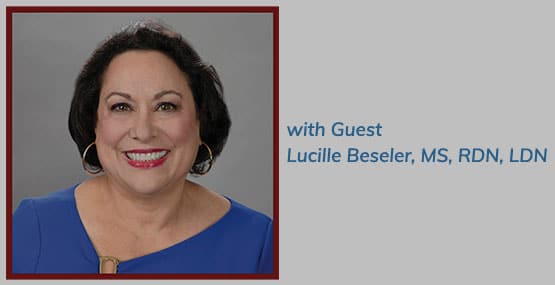
Gluten and gluten-related diseases: A comprehensive overview
Reactions to gluten and wheat: The differences and the what-to-do's
Gluten is a term you've probably heard before, but what exactly is it, and why does it matter? For most people, consuming gluten is harmless, but for others, it can lead to a range of health issues known as gluten-related diseases. In this comprehensive guide, we'll explore gluten, its sources, and the various diseases associated with gluten intolerance, such as celiac disease, non-celiac gluten sensitivity, and wheat allergy.
What is gluten?
Gluten is a protein composite found in wheat, barley, rye, and their hybrid grains like triticale. It provides elasticity to dough, helping it rise and maintain its shape during baking. Gluten is made up of two main proteins: glutenin and gliadin. Gliadin is the component primarily responsible for triggering immune responses in people with gluten-related diseases.
Celiac disease
Celiac disease is a severe autoimmune disorder triggered by the consumption of gluten. When individuals with celiac disease eat gluten-containing foods, their immune system mistakenly attacks and damages the lining of the small intestine. This can lead to various symptoms and complications. Here are key points about celiac disease:
Symptoms:
- Digestive issues: Diarrhea, abdominal pain, bloating, gas, and loss of appetite.
- Malnutrition: Poor absorption of nutrients can lead to weight loss, fatigue, and nutrient deficiencies. Kids can have poor growth
- Skin problems: Itchy, blistering skin rashes called dermatitis herpetiformis.
- Joint pain: Some individuals may experience joint pain and inflammation.
- Neurological symptoms: These can include headaches, depression, and cognitive difficulties.
- No symptoms (yet): Some may not notice it at all, but they have a family member or a condition, such as diabetes or Downs syndrome, which makes them more susceptible.
Diagnosis:
- Blood tests: Initial screenings measure antibodies to gliadin (associated with celiac disease).
- Endoscopy: A biopsy of the small intestine confirms the diagnosis by assessing damage to the intestinal lining.
Treatment:
- Lifelong gluten-free diet: The only effective treatment is to completely eliminate gluten from the diet. If gluten sneaks into their diet, they often have one of their previous symptoms, AND frequent exposure can result in infertility or an intestinal cancer.
- Because of gluten's damage to the upper intestinal tract, some will have temporary lactose intolerance until that area is healed after avoiding gluten for several weeks to months.
- Research is continuing to try to develop a medicine so those with celiac disease don't have to avoid gluten—but nothing has proven effective yet. Stay tuned.
Non-celiac gluten sensitivity (NCGS)
Non-celiac gluten sensitivity (NCGS) is a condition characterized by gastrointestinal and non-gastrointestinal symptoms in response to gluten consumption. Unlike celiac disease, NCGS does not involve the immune system or cause damage to the small intestine. Key points about NCGS include:
Symptoms:
- Gastrointestinal symptoms: Bloating, abdominal pain, diarrhea, and / or constipation.
- Non-gastrointestinal symptoms: Fatigue, headaches, joint pain, and mood disturbances.
Diagnosis:
- NCGS is diagnosed through exclusion, meaning other conditions like celiac disease and wheat allergy are ruled out. Those with NCGS do not have a high anti-gliadin antibody level.
Treatment:
- A gluten-free diet: Managing NCGS involves avoiding gluten-containing foods. Unlike celiac disease, there's no damage, and it seems, no long-term consequences if gluten slips into the diet.
Wheat allergy
A wheat allergy is an allergic reaction to proteins found in wheat, including but not limited to gluten. Unlike gluten-related diseases, wheat allergy is an immune response involving IgE antibodies. Key points about wheat allergy include:
Symptoms:
- Immediate allergic reactions: These can range from hives and itching to difficulty breathing and anaphylaxis.
- Gastrointestinal symptoms: Nausea, vomiting, and diarrhea may occur.
Diagnosis:
- Certain allergy tests, skin prick tests and blood tests, can confirm the presence of wheat-specific IgE antibodies.
Treatment:
- Strict avoidance of wheat and wheat-derived products is essential. But can usually eat all other grains.
- Epinephrine may be prescribed for severe allergic reactions.
Gluten-free diet
A gluten-free diet is the primary treatment for celiac disease, and NCGS. Those with wheat allergy can just avoid wheat and anything else they're allergic to, but may find it easier to look for gluten free foods.
However, following a gluten-free diet can be challenging due to the presence of gluten in many foods. Here are some key principles for a gluten-free diet:
- Naturally gluten-free foods: Emphasize naturally gluten-free foods like fruits, vegetables, lean meats, fish, legumes, and most dairy products.
- Grains and flours: Choose gluten-free grains and flours, such as rice, corn, quinoa, and almond or coconut flour.
- Gluten-free labeling: Look for products labeled as "gluten-free" to ensure they meet gluten-free standards.
- Cross-contamination: Avoid cross-contamination by using separate cooking utensils and kitchen equipment for gluten-free and gluten-containing foods. At friends' homes, make sure they understand why you follow these guidelines.
- Read labels: Carefully read ingredient labels to identify hidden sources of gluten, such as wheat starch, malt, and modified food starch.
- Prevent constipation: Gluten-free foods can be constipating, with less fiber in many of the products. Those fruits and vegetables can help, but if your kids aren't getting enough, smoothies can help.
- Gluten-free doesn't mean healthier: Gluten-free foods can still contain more sugar and heavy metals than you realize. Be thoughtful and reduce their sugar load.
Gluten in everyday foods
Gluten can hide in various foods and products, making it essential for individuals with gluten-related diseases to be vigilant. Here are common sources of gluten:
- Bread and baked goods: Wheat-based bread, cakes, cookies, and pastries contain gluten.
- Pasta: Traditional pasta is made from wheat flour, but gluten-free alternatives are available.
- Cereals: Many breakfast cereals contain gluten, but gluten-free options are widely available.
- Beer: Most beers contain gluten, but gluten-free beers are available.
- Sauces and gravies: Soy sauce, Worcestershire sauce, and some gravies contain gluten.
- Processed meats: Some processed meats, like sausages, may contain gluten fillers.
- Thickening agents: Foods thickened with wheat flour or roux contain gluten.
Dining out
Eating out while following a gluten-free diet requires careful planning and communication with restaurant or the school's cafeteria staff. Here are some tips:
- Research: Look for restaurants with gluten-free menus or options.
- Call ahead: Call the restaurant in advance to discuss your dietary needs.
- Ask questions: When ordering, ask about ingredients and preparation methods.
- Be cautious: Be aware of potential cross-contamination in kitchens.
- Choose naturally gluten-free: Select dishes that should be gluten-free naturally, like salads and grilled proteins.
Gluten-free living
Living with a gluten-related disease can present challenges, but it's essential to focus on maintaining a healthy, gluten-free lifestyle. Here are some additional tips for gluten-free living:
- Education: Learn to identify safe and unsafe foods and ingredients.
- Support: Seek support from healthcare providers, dietitians, and local support groups.
- Meal planning: Plan meals and snacks to ensure a balanced, gluten-free diet. See our suggestions for gluten-free snacks and breakfasts.
- Read labels: Always read food labels, as ingredients can change.
- Advocate: Educate friends and family about your dietary needs to ensure safe gatherings.
- Get your questions answered: National organizations have been formed to help. See our list of resources below.
Conclusion
Gluten-related diseases, including celiac disease, non-celiac gluten sensitivity, and wheat allergy, require individuals to adopt a gluten-free lifestyle. Understanding the differences between these conditions and learning to navigate a gluten-free diet is essential for managing symptoms and maintaining overall health. With the right knowledge and support, those with gluten-related diseases can lead healthy and fulfilling lives while enjoying delicious gluten-free meals and snacks.
Sources and resources
National Institutes of Health
Celiac Central – www.CeliacCentral.org/kids
- Online community of families impacted by celiac disease
- National Foundation for Celiac Awareness' Healthcare and Patient Services programming
Celiac Disease Foundation
Cleveland Clinic
https://my.clevelandclinic.org/health/diseases/21460-dermatitis-herpetiformis
Nutrition4Kids




